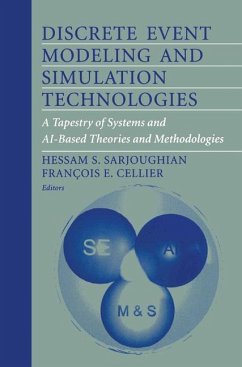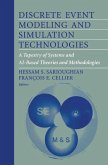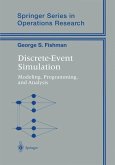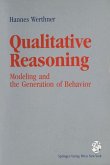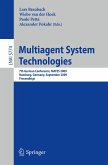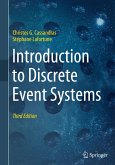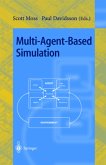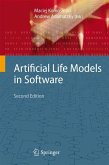The computing world has witnessed during the 1990s many advances in areas such as mobile and enterprise computing. The common underlying basis enabling the realization of various facets of these dinds of computing is Modeling, Simulation, and Artificial Intelligence. With the enterprise computing in areas as diverse as manufacturing, health organization, and commerce, the need for a disciplined, multifaceted, unified approach to modeling and simulation has become essential. This new book provides a forum for scientists, academicians, and professionals alike from around the globe to present their latest and exciting research findings in various fields of artificial intelligence, collaborative/distributed computing, modeling, simulation, and their integration. Whereas some of these research areas continue to seek answers to basic fundamental scientific inquiries that have remained unanswered for more than half a century, other questions have emerged only recently due to advances in various areas of computing infrastructure, technologies, and techniques. The principal objective of this book is to provide a unifying forum for developing postmodern AI-based modeling & simulation environments and their utilization in traditional application domains as well as those deemed to be vital in future technologies. Readership: R&D professionals and practitioners in CS, software engineering, AI, and computer modeling.
The initial ideas behind this edited volume started in spring of 1998 - some two years before the sixtieth birthday of Bernard P. Zeigler. The idea was to bring together distinguished researchers, colleagues, and former students of Professor Zeigler to present their latest findings at the AIS' 2000 conference. During the spring of 1999, the initial ideas evolved into creating a volume of articles surrounding seminal concepts pertaining to modeling and simulation as proposed, developed, and advocated by Professor Zeigler throughout his scientific career. Also included would be articles describing progress covering related aspects of software engineering and artificial intelligence. As this volume is emphasizing concepts and ideas spawned by the work of Bernard P. Zeigler, it is most appropriate to offer a biographical sketch of his scientific life, thus putting into a historical perspective the contributions presented in this volume as well as new research directions that may lie ahead! Bernard P. Zeigler was born March 5, 1940, in Montreal, Quebec, Canada, where he obtained his bachelor's degree in engineering physics in 1962 from McGill University. Two years later, having completed his MS degree in electrical engineering at the Massachusetts Institute of Technology, he spent a year at the National Research Council in Ottawa. Returning to academia, he became a Ph. D. student in computer and communication sciences at the University of Michigan, Ann Arbor.
The initial ideas behind this edited volume started in spring of 1998 - some two years before the sixtieth birthday of Bernard P. Zeigler. The idea was to bring together distinguished researchers, colleagues, and former students of Professor Zeigler to present their latest findings at the AIS' 2000 conference. During the spring of 1999, the initial ideas evolved into creating a volume of articles surrounding seminal concepts pertaining to modeling and simulation as proposed, developed, and advocated by Professor Zeigler throughout his scientific career. Also included would be articles describing progress covering related aspects of software engineering and artificial intelligence. As this volume is emphasizing concepts and ideas spawned by the work of Bernard P. Zeigler, it is most appropriate to offer a biographical sketch of his scientific life, thus putting into a historical perspective the contributions presented in this volume as well as new research directions that may lie ahead! Bernard P. Zeigler was born March 5, 1940, in Montreal, Quebec, Canada, where he obtained his bachelor's degree in engineering physics in 1962 from McGill University. Two years later, having completed his MS degree in electrical engineering at the Massachusetts Institute of Technology, he spent a year at the National Research Council in Ottawa. Returning to academia, he became a Ph. D. student in computer and communication sciences at the University of Michigan, Ann Arbor.

